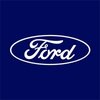Filter interviews by
Eicher Trucks and Buses Workshop Supervisor Interview Questions and Answers
Eicher Trucks and Buses Workshop Supervisor Interview Experiences
1 interview found
(3 Questions)
- Q1. Engine heating reason
- Ans.
Engine heating is caused by the combustion process generating heat that is not dissipated quickly enough.
Combustion process generates heat
Heat is not dissipated quickly enough
Can be caused by low coolant levels, malfunctioning thermostat, or clogged radiator
Can lead to engine damage if not addressed
- Q2. Difference between Bs4 and Bs6
- Ans.
BS4 and BS6 are emission norms set by the government to regulate the amount of pollutants emitted by vehicles.
BS4 stands for Bharat Stage 4 and BS6 stands for Bharat Stage 6.
BS6 is the latest emission standard set by the government, which is more stringent than BS4.
BS6 compliant vehicles emit lower levels of pollutants such as nitrogen oxides, carbon monoxide, hydrocarbons, and particulate matter compared to BS4 vehicl...
- Q3. Scr system. Description about this system
- Ans.
SCR system is a technology used in diesel engines to reduce nitrogen oxide emissions.
SCR stands for Selective Catalytic Reduction
It uses a catalyst to convert harmful nitrogen oxides into harmless nitrogen and water
Requires a urea solution to be injected into the exhaust system
Commonly used in heavy-duty vehicles and industrial equipment
Interview Preparation Tips
Skills evaluated in this interview
Top trending discussions






Interview questions from similar companies

I applied via Company Website and was interviewed in Dec 2020. There were 4 interview rounds.
Interview Questionnaire
2 Questions
- Q1. 1. Roles & Responsibilities ?
- Ans.
Senior Engineers lead projects, mentor teams, and ensure technical excellence in design and implementation.
Lead project design and architecture, ensuring scalability and performance. Example: Designing a microservices architecture for a large application.
Mentor junior engineers, providing guidance on best practices and career development. Example: Conducting code reviews and offering constructive feedback.
Collaborate w...
- Q2. 2. Daily working routine ?
Interview Preparation Tips

I applied via Naukri.com and was interviewed before Jul 2020. There were 5 interview rounds.
Interview Questionnaire
2 Questions
- Q1. How can you satisfy your job
- Q2. With hardwork and my experience
Interview Preparation Tips

Interview Questionnaire
2 Questions
- Q1. What do you mean by CFMEA?
- Ans.
CFMEA stands for Control Failure Mode and Effects Analysis.
CFMEA is a systematic approach used to identify and mitigate potential failures in a process or system.
It involves analyzing failure modes, their causes, and the potential effects on the process or system.
CFMEA helps in prioritizing and implementing control measures to prevent or minimize failures.
It is commonly used in industries such as manufacturing, automot...
- Q2. Is system level or component level DFMEA given main preference?
- Ans.
System level DFMEA is given main preference.
System level DFMEA considers the entire system and its interactions.
Component level DFMEA focuses on individual components.
System level DFMEA is more comprehensive and effective in identifying potential failures.
Example: In automotive industry, system level DFMEA would consider the entire vehicle and its subsystems.
Example: In medical devices, system level DFMEA would conside...
Interview Preparation Tips

I applied via Recruitment Consulltant and was interviewed before Feb 2021. There was 1 interview round.
(2 Questions)
- Q1. Open pump house and Tunnels
- Q2. Road and
Interview Preparation Tips

I applied via Recruitment Consulltant and was interviewed before Feb 2021. There was 1 interview round.
(2 Questions)
- Q1. Open pump house and Tunnels
- Q2. Road and
Interview Preparation Tips

I applied via Recruitment Consultant and was interviewed before Dec 2020. There was 1 interview round.
Interview Questionnaire
3 Questions
- Q1. Tell me about problem solving tools.
- Ans.
Problem solving tools are techniques used to identify, analyze and solve problems.
Root cause analysis
Fishbone diagram
SWOT analysis
Pareto chart
Brainstorming
5 Whys
Flowchart
Decision matrix
- Q2. How you deal with problem.
- Q3. What you done best in last 6 months.
Interview Preparation Tips

I applied via Naukri.com and was interviewed in Oct 2020. There was 1 interview round.
Interview Questionnaire
1 Question
- Q1. Technical and Management questions related to my field
Interview Preparation Tips

(5 Questions)
- Q1. What is engine working
- Ans.
Engine working refers to the process of converting fuel into mechanical energy to power a vehicle or machine.
Fuel is ignited in the combustion chamber, creating high-pressure gases that push the pistons down.
The pistons are connected to the crankshaft, which converts the up-and-down motion into rotational motion.
The rotational motion is transferred to the transmission, which then powers the wheels or other machinery.
Th...
- Q2. What is thewirking pronciple of 4 stroje diesel engine
- Ans.
A 4-stroke diesel engine works on the principle of internal combustion, where fuel is ignited by compressed air.
Intake stroke: air is drawn into the cylinder
Compression stroke: air is compressed, raising its temperature
Power stroke: fuel is injected and ignited, causing a rapid expansion of gases and pushing the piston down
Exhaust stroke: the piston pushes the exhaust gases out of the cylinder
Diesel engines are more fu...
- Q3. What are the engine type of engine
- Ans.
There are several types of engines, including internal combustion, electric, hybrid, and rotary engines.
Internal combustion engines are the most common and include gasoline and diesel engines.
Electric engines use electricity to power the vehicle and are becoming more popular.
Hybrid engines combine both internal combustion and electric engines.
Rotary engines are less common and use a unique design to generate power.
Othe...
- Q4. What is value timing diagram
- Ans.
A value timing diagram is a graphical representation of the timing relationship between input and output signals.
It shows the timing relationship between input and output signals
It is used to analyze the behavior of digital circuits
It helps in identifying timing violations and optimizing circuit performance
It consists of a horizontal time axis and vertical voltage axis
Examples include setup and hold time diagrams for f
- Q5. What are the 3 main engine system
- Ans.
The 3 main engine systems are fuel, ignition, and cooling.
Fuel system: responsible for delivering fuel to the engine
Ignition system: responsible for igniting the fuel-air mixture
Cooling system: responsible for regulating the engine temperature
Examples: gasoline engine, diesel engine, hybrid engine
Interview Preparation Tips

I applied via Naukri.com and was interviewed in Apr 2021. There were 3 interview rounds.
Interview Questionnaire
1 Question
- Q1. What is your Expertise in Quality
Interview Preparation Tips
Eicher Trucks and Buses Interview FAQs
Tell us how to improve this page.
Eicher Trucks and Buses Interviews By Designations
- Eicher Trucks and Buses Quality Inspector Interview Questions
- Eicher Trucks and Buses Manufacturing Engineer Interview Questions
- Eicher Trucks and Buses Workshop Supervisor Interview Questions
- Eicher Trucks and Buses Accounts Associate Interview Questions
- Eicher Trucks and Buses Trainee Operating Engineer Interview Questions
- Eicher Trucks and Buses Sales Executive Interview Questions
- Eicher Trucks and Buses QA Engineer Interview Questions
- Eicher Trucks and Buses CFD Engineer Interview Questions
- Show more
Interview Questions for Popular Designations
- Workshop Manager Interview Questions
- Workshop Incharge Interview Questions
- Workshop Engineer Interview Questions
- Operator Interview Questions
- Technician Interview Questions
- Electrical Technician Interview Questions
- Diploma Mechanical Engineer Interview Questions
- Diploma Electrical Engineer Interview Questions
- Show more
Interview Questions from Similar Companies
Eicher Trucks and Buses Workshop Supervisor Reviews and Ratings
based on 2 reviews
Rating in categories
|
Junior Manager
19
salaries
| ₹2.7 L/yr - ₹6.3 L/yr |
|
Service Advisor
9
salaries
| ₹2.4 L/yr - ₹3.5 L/yr |
|
Design Engineer
9
salaries
| ₹3 L/yr - ₹4.8 L/yr |
|
Service Engineer
8
salaries
| ₹2.3 L/yr - ₹6.5 L/yr |
|
Deputy Manager
7
salaries
| ₹7.8 L/yr - ₹12 L/yr |

Maruti Suzuki

Bajaj Auto

Sasken

Mahindra & Mahindra
- Home >
- Interviews >
- Eicher Trucks and Buses Interview Questions >
- Eicher Trucks and Buses Workshop Supervisor Interview Questions










